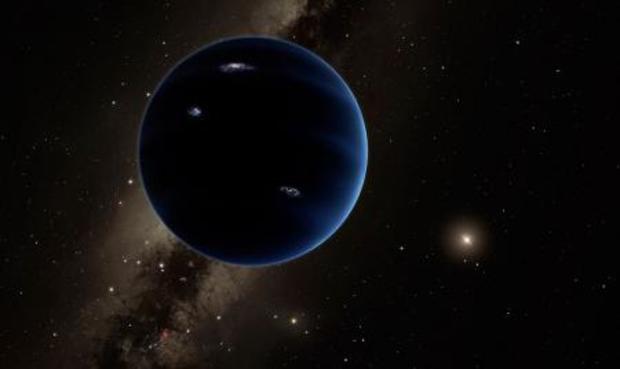Caltech Researchers Uncover 'Solid Evidence' For 'Planet Nine' Lurking In Outer Solar System
PASADENA (CBSLA.com/AP) — Scientists say they finally have "solid evidence" for Planet X, a true ninth planet on the fringes of our solar system.
Caltech researchers have found evidence of a giant planet - which they call Planet 9 - tracing a bizarre, highly elongated orbit in the outer solar system, according to researchers Konstantin Batygin and Mike Brown.
The two reported on their research Wednesday in the Astronomical Journal in a paper titled "Evidence for a Distant Giant Planet in the Solar System."
The gas giant - thought to be almost as big as Neptune and orbiting billions of miles beyond Neptune's path -- has a mass about 10 times that of Earth and orbits about 20 times farther from the sun on average than Neptune.
"Although we were initially quite skeptical that this planet could exist, as we continued to investigate its orbit and what it would mean for the outer solar system, we become increasingly convinced that it is out there," says Batygin, an assistant professor of planetary science. "For the first time in over 150 years, there is solid evidence that the solar system's planetary census is incomplete."
While researchers haven't actually spotted Planet Nine yet, they base their findings on mathematical and computer modeling, and anticipate its discovery via telescope within five years.
"This would be a real ninth planet," says Brown, the Richard and Barbara Rosenberg Professor of Planetary Astronomy. "There have only been two true planets discovered since ancient times, and this would be a third. It's a pretty substantial chunk of our solar system that's still out there to be found, which is pretty exciting."
At roughly 5,000 times the mass of Pluto, Brown notes the would-be ninth planet is large enough to settle any argument about whether it deserves to be classified as a true planet.
In fact, Brown added, Planet Nine could be "the most planet-y of the planets in the whole solar system" since it dominates a region larger than any of the other known planets.
Despite its large size, however, researchers are still working to determine the exact location of the planet, since only its highly elliptical orbit has been determined.
Brown, known in the scientific community for his role in the demotion of Pluto from a planet to a dwarf planet, says if Planet Nine is currently located anywhere in between its perihelion - the point in the orbit of a planet at which it comes closest to the sun - and the most distant part of its orbit, many telescopes have a shot at finding it.
"All those people who are mad that Pluto is no longer a planet can be thrilled to know that there is a real planet out there still to be found," said Brown. "Now we can go and find this planet and make the solar system have nine planets once again."
(TM and © Copyright 2016 CBS Local Media, a division of CBS Radio Inc. and its relevant subsidiaries. CBS RADIO and EYE Logo TM and Copyright 2016 CBS Broadcasting Inc. Used under license. All Rights Reserved. This material may not be published, broadcast, rewritten, or redistributed. The Associated Press contributed to this report.)




